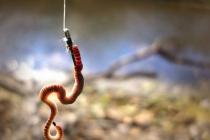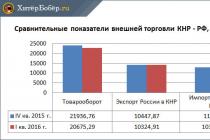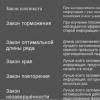A mass series of third-generation nuclear submarines with reduced noise and a multifunctional weapon system.
They belong to third-generation nuclear boats, they entered the fleet since 1984 to replace their predecessors (mainly the boat family). A total of 15 such boats were built, in this moment 12 are in service, one leased to India.
The creation of the boat was launched in the summer of 1976, in September 1977 a technical project was ready, which was finalized until 1980. In 1983, the first boat of the series was laid down. The developer is the Leningrad SKB-143 Malachite. Chief designer Georgy Chernyshev.
When designing this type of submarine Special attention silence was given. The measured acoustic parameters of Project 971 were a very unpleasant surprise for Americans who are used to the fact that Russian submarines are very noisy. To reduce noise, a number of tricks had to be taken - for example, the Soviet Union, bypassing the tight export controls of the West, imported metalworking centers from the Japanese corporation Toshiba, on which propellers for these boats were then made.
The design of the boat is double-hull, standard for the Soviet fleet, the material is high-strength steel (the competitor, the Project 945 boat, was built from titanium alloys, which increased the cost of production and complicated the technology).
Surface displacement over 8,000 tons, underwater - about 13,000 tons. The working depth of immersion is 480-520 meters for different versions of the project. Crew 73 people.
Installed combat Information system"Omnimbus", the hydroacoustic complex MGK-540 "Skat-3" and the navigation complex "Symphony-U" are associated with it.
Armament - eight bow torpedo tubes (four caliber 533 mm and four caliber 650 mm). Ammunition load up to 40 missiles, rocket torpedoes or torpedoes, 12 of them - 650 mm caliber (type 65-76 torpedoes, 86R missiles of the RPK-7 Veter anti-submarine complex). In caliber 533 mm, the boat could use UGST and USET-80 torpedoes, Shkval missiles, 83R anti-submarine missiles of the RPK-6 Vodopad complex, as well as S-10 Granat strategic cruise missiles.
Some of the boats are equipped with 533-mm launchers REPS-324 "Barrier" for sonar countermeasures - active jamming stations that simulate the acoustic portrait of the boat. Also, SOKS equipment was installed on some of the boats - the MNK-200-1 Tukan detection station, which makes it possible to detect enemy ships and submarines along the wake.
One of the boats laid down under the Soviet Union, the K-152 Nerpa, was completed according to the Irbis project 971I and leased to India. The export version of Shchuk-B is devoid of some critical systems, including Granat missiles and SOKS equipment, the basic systems are coarsened in export performance. At the moment, an agreement has been signed on the completion of this project with the subsequent transfer of another boat to India - the so-called. "Order 519" (the degree of readiness is about 60 percent).
At the moment, boats of this type are sent for modernization. During the planned modernization of the boat Russian fleet, as far as can be judged from open sources, the submarines will be completely replaced by avionics, as well as the weapons system will be changed, in particular, they will equip the submarines with the new Caliber-PL universal missile system, which allows the use of anti-ship missiles, anti-submarine missiles and missiles to attack ground goals.
1988 October 26
Laid down in the workshop of the Production Association "Sevmashpredpriyatie" in Severodvinsk as an ABPL;
1990 September 15 - 1992 January 12
The crew was trained at the 270th Training Center of the Navy (Sosnovy Bor). Upon completion of training, he arrived in Severodvinsk and was subordinated to the 339th ObrSRPL BelVMB;
1991 April 29
Inherited Red Banner naval ensign from the Premier League K-181(project 627A);
1992 October 15 - 30
Conducted factory sea trials. During the tests passed: in the surface position - 3663.5 miles, in the submerged position - 1767.3 miles;
1992 November 30 - December 30
Fulfilled the program of state tests. During the tests passed: in the surface position - 1606.6 miles, in the submerged position - 729.1 miles;
1992 December 30
Acceptance document signed. Entered service. Responsible deliverer Kuznetsov V.I., delivery mechanic Pastukhov V.P.;
1993 January 26 - 29
Made the transition to the place of permanent basing in the Yagelnaya Bay Sayda Bay;
1993 February 5
Included in the CSF, became part of the 24th Divisional Submarine of the 3rd Divisional Submarine of the Northern Fleet, based on the Yagelnaya Bay of Sayda Bay (Gadzhiyevo);
1994
Worked out with 608 crew on board full course BP;
1994 June - September
Completed the tasks of the BS with the 608th crew (commander - cap. 1r. Popov A.A., senior - cap. 1r. Korolev V.I.) on board;
1994
The 608th crew (commander - cap. 1st r. Popov A.A.) won the prize of the Navy Civil Code for anti-submarine training;
1997
Was under repair in Severodvinsk;
1998 April - July
Completed the tasks of the BS with the crew of the AKrPL K-317(commander - cap. 1 r. Spravtsev S.V., senior on board - ZKD cap. 1 r. Knipst A.A.);
2000 February - April
Completed the tasks of the BS with the 608th crew (commander - cap. 1r. Kavlis S.E.) on board;
November 25, 2001
An agreement on sponsorship relations was concluded with the Department of State and Municipal Property of the Government of Moscow;
2002 September 1
Reorganized into the 24th DiPL of the 12th Squadron of the Northern Fleet with the same base;
March 19, 2003
An agreement on sponsorship relations was concluded with the administration of the Prioksky district of Nizhny Novgorod;
2005 year
On board the PLAK, the 2nd crew (commander - cap. 1r. Egorov A.P.) entered the first line;
2006
Completed the tasks of the BS (commander - cap. 1r. Egorov A.P.);
2006
The crew received delegations from the Ministry of Defense of Norway and France;
2006 - 2007
Presumably was under repair in Severodvinsk;
2007
Practice shooting with a practical missile ZM-10 was carried out;
2008
She was in the Navy. It was part of the 24th DiPL of the 12th Squadron of the Northern Fleet, based on the Yagelnaya Bay of Sayda Bay (Gadzhiyevo);
year 2009
The crew was trained at the 270th Training Center of the Navy (Sosnovy Bor);
2011
Reorganized into the 24th DiPL of the Northern Fleet Submarine Forces with the same base;
July 2011
Arrived at Zvezdochka Ship Repair Center OJSC for medium repairs and modernization under the project 971M(project number is suggested);
year 2012
She was at JSC "Ship Repair Center" Zvezdochka ";
April 2013
It was located in the slipway shop of Zvyozdochka Ship Repair Center OJSC. nuclear fuel. It is planned that during the modernization of the nuclear submarines of projects 945 "Barracuda" and 971 "Pike-B" will receive updated navigation, control and communications systems, and their ammunition will be expanded due to missile system"Caliber". It is assumed in the media that the modernization will be carried out according to project 971M. According to CEO enterprises, nuclear submarines plan to hand over to the fleet by 2016;
2013 - 2017
Was under repair with modernization at Zvezdochka Ship Repair Centre;
April 2017
First updated ship project 971M(NPS K-328 "Leopard") The Navy will receive in 2018. In terms of their technical and combat characteristics, the upgraded ships will meet the requirements of the fleet for multi-purpose nuclear submarines of the 4th generation," Zvezdochka spokesman Yevgeny Gladyshev told Izvestiya. During the upgrade, weapons systems, electronic equipment and hydroacoustic stations will be updated. After "Leopard" on the "Zvezdochka" modernize the same type of boats K-461 "Wolf", K-391 "Bratsk" And K-295 "Samara";
January 2019
At the beginning of the year, there was no specific information in the media about plans for the nuclear submarine to enter service. Presumably the dates are shifted to the end of 2019 or later.
The newest multi-purpose Russian nuclear submarine "Gepard" of the 5th generation is designed to destroy aircraft carriers, as well as destroy coastal facilities and targets.
"Gepard" is a multi-purpose nuclear submarine of the improved project 971 ("Bars" class, according to NATO classification - "Akula-2").
The project was developed by the Marine Engineering Bureau "Malachite". This is the eleventh Bars-class submarine produced at the Northern Machine-Building Enterprise since 1988. Two of them - "Gepard" and "Vepr" (adopted into Northern Fleet in 1996) - significantly modernized. Russian designers claim that these nuclear-powered submarines are the quietest and fastest in the world.
On board the ship there are two DG-300 diesel generators with reversible converters (2 x 750 hp) with a fuel reserve for 10 days of operation. They are designed to generate direct current for propulsion motors and alternating current for general ship consumers.
Hydroacoustic complex MGK-503 "Skat-KS" with digital system information processing has a powerful system of direction finding and sonar. It includes a developed bow antenna, two long-range onboard antennas, as well as an extended towed antenna placed in a container located on the vertical tail (the dimensions of the container are much larger than on the nuclear submarine of project 671RTM). In addition to the SJSC, Project 971 nuclear submarines are equipped with a highly effective, unparalleled world-wide system for detecting enemy submarines and surface ships along the wake (the equipment installed on the boat makes it possible to record such a trail many hours after the passage of the enemy submarine).
The ship is equipped with the Medveditsa-971 navigation complex, as well as the Molniya-M radio communication complex with the Symphony space communication system and a towed antenna.
The torpedo-missile system includes four torpedo tubes with a caliber of 533 mm and four 650-mm torpedo tubes (the total ammunition load is more than 40 units of weapons, including 28 with a caliber of 533 mm). It is adapted to fire Granat cruise missiles, underwater missiles and Shkval, Vodopad and Veter rocket-torpedoes, as well as torpedoes and self-transporting mines. In addition, the boat can carry out the setting of conventional mines. Fire control of Granit cruise missiles is carried out by a special hardware complex.
In the 90s. The universal deep-sea homing torpedo UGST, created by the Research Institute of Marine Thermal Engineering and GNPP Region, entered service with submarines. It replaced the TEST-71M electric anti-submarine torpedo and the 53-65K high-speed anti-ship torpedo.
At the same time, on the basis of the Soviet-American agreements in 1989, weapons systems with nuclear warheads were excluded from the armament of multi-purpose nuclear submarines - the Shkval and Vodopad rocket-torpedoes with SBC, as well as 28 long-range cruise missiles RK-55 "Granit "to destroy coastal targets at ranges up to 3000 km, which can be equipped with a 200 kiloton nuclear warhead.
The lead nuclear-powered ship of the 971st project - K-284 - was laid down on the banks of the Amur in 1980 and entered service on December 30, 1984. Already in the process of its testing, the achievement of a qualitatively more high level acoustic stealth. The noise level of the K-284 turned out to be 12-15dB (ie, 4-4.5 times) lower than the noise level of the "quietest" domestic boat of the previous generation - 671RTM. According to the NATO classification, the new nuclear submarines received the designation Akula.
After the first "just Sharks" ships appeared, which in the West were called Improved Akula (probably, boats of Severodvinsk construction, as well as the last "Komsomol" ships) were included among them. Compared to their predecessors, they had better stealth than the improved Los Angeles-class boats (SSN-688-I) of the US Navy.
In 1996, the Vepr submarine built in Severodvinsk entered service. Retaining the old contours, he had a new design of a durable hull and internal "stuffing". Again, a serious leap forward was made in the field of noise reduction. In the West, this ship (as well as subsequent nuclear submarines of the 971 project) was called Akula-2.
According to US naval intelligence, the robust hull of the modernized Bars has a 4 m long insert. The additional tonnage made it possible, in particular, to equip the boat with "active" systems to reduce the vibration of the power plant, almost completely eliminating its effect on the ship's hull. According to American experts, in terms of stealth characteristics, the upgraded boat of the 971st project is approaching the level of the fourth-generation American multi-purpose nuclear submarine SSN-21 Seawolf.
High stealth and combat stability give the "Bars" the opportunity to successfully overcome anti-submarine lines equipped with stationary systems for long-range sonar surveillance, as well as countering anti-submarine forces. They can operate in the zone of enemy domination and inflict sensitive missile and torpedo strikes on him. Armament "Bars" allows them to fight with submarines and surface ships, as well as with high precision hit ground targets with cruise missiles.
The speed under water reaches 36 knots. In autonomous mode, the submarine can operate up to 100 days. Crew - 61 people.
The predecessors of the "Cheetah" left the plant two years after the laying. Before the "Cheetah" were "Bars", "Panther", "Wolf", "Leopard", "Tiger", "Vepr". Sailors call this series of cat boats, although officially project 971, to which the Gepard belongs, has the code Pike-B, and according to the NATO classification, Shark-2. Despite the difference in names, they are all close to the new boat. They notice one main feature of the "cat" series - the noiselessness of the move. These are boats of the third generation.
Even under the most favorable conditions, an American submarine of the Los Angeles type, which has the most advanced hydroacoustics, will be able to detect a “cat” boat no further than 10 kilometers away. This distance is critical. A nuclear submarine that crept unnoticed can already unhinderedly carry out a combat mission.
American naval analyst N. Polmer at a hearing in the National Security Committee of the House of Representatives of the US Congress noted: “The appearance of submarines of the Akula type, as well as other third-generation Russian nuclear submarines, demonstrated that Soviet shipbuilders closed the gap in noise levels faster than expected . In 1994, it became known that the gap no longer exists.”
The “cat” series of boats is the closest relative of the Barracuda nuclear submarine of project 945 created in the Nizhny Novgorod Central Design Bureau “Lazurit”. Recall that this boat is deep-sea, with a titanium hull. Today, the name of its chief designer, Hero of Russia Nikolai Kvasha, is widely known.
Until May 1990, six submarines of this type were built.
The Barracuda had one significant drawback. It was very expensive, and not every Russian shipyard where submarines were made could work with titanium. The fleet needed a series of submarines general profile, cheap and easy to implement. Project 945 was taken as a basis, but the hull of the boat was made of low-magnetic steel. new series boats were assigned to project 971.
This series of nuclear submarines inherited its “cat” name from the first Russian boats of the early 20th century. That former "Cheetah" was founded in September 1913 at the Baltic Shipyard in St. Petersburg. A year and a half later, the boat was already in service with warships. She participated in the First World War, providing search and reconnaissance operations on enemy sea lanes. The boat made 15 military campaigns. But in October 1917, while on patrol in the Baltic Sea, she disappeared without a trace. The cause of the tragedy and the place of death have not yet been established.
A series of boats of project 971 was developed by Leningraders. In addition to the fact that the boats are quiet, they are also formidable. The torpedo-missile complex includes a total ammunition load of more than 40 units of weapons. The boats can launch Granat cruise missiles, underwater missiles and Shkval, Vodopad and Veter torpedo missiles. The boat can also be used as a mine layer.
With the appearance in the waters of the northern seas and on pacific ocean“Cat” nuclear submarines, the Americans had to forget the words that they constantly repeated: “Russian submarines are larger than ours, but they are badly made.”
And the head of the operational detachment of the US Navy, Admiral Jermy Borda, after analyzing all the contacts of his boats with submarines of the "cat" series, came to the conclusion that in terms of low noise they correspond to fourth-generation boats.
Concerned about the rapid development of Russian submarine shipbuilding, the American side made an attempt to involve the international non-governmental environmental organization Greenpeace in the planned operation. In obedience to customers, she transferred all her activities to the northern seas, fighting their nuclear contamination. As soon as the construction of new submarines in Russia stopped, Greenpeace immediately left the northern waters.
There was another incident related to these boats. In the early 80s, our country acquired unique high-precision metal cutting machines from the Japanese company Toshiba. The deal was secret, but the press found out about it and immediately trumpeted it all over the world. These machines made it possible to apply new technologies in the processing of propeller shafts and propeller blades, thereby dramatically reducing the noise of the submarine. The United States, having learned about the deal, immediately announced to Toshiba the introduction of economic sanctions. But it was already too late.
The hull of the boat has a hydroacoustic coating and is divided into seven main compartments. Comfortable conditions have been created for the crew: a rest room, Gym and even a small sauna with a swimming pool. Living quarters for four people are very similar to the compartment of a passenger train.
An interesting incident occurred on February 29, 1996, in the midst of a NATO exercise. Warships were searching for a conditional underwater enemy. The training task was completed, when suddenly a Russian submarine got in touch. Her commander asked for help. It was necessary to urgently evacuate a sailor with an acute attack of appendicitis.
For the British, to whom the request was addressed, it was a shock. Until now, they are at a loss: whether the help was really needed, or whether it was a well-conceived operation. When the boat surfaced, everyone saw that it was in the very center of the order of NATO ships. Whether the combat situation is real ...
"Cheetah" at a working speed that allows it to quickly survey a sufficiently large area is not detected at all by existing sonar facilities. And even when he picks up speed, he is able to "see" and "hear" any adversary in the ocean before he notices him.
The Americans were also shocked when they "accidentally" discovered our "Pike" near their territorial waters.
Another "Pike" distinguished itself in the summer of 1999 during the NATO aggression against Yugoslavia. Then there was a message that our submarine was seen in the waters of the Mediterranean Sea. She was indeed noticed when she passed the narrow Strait of Gibraltar. But then she kind of melted away. After some time, she appeared off the coast of Corsica and Yugoslavia. She was hunted by both surface ships and anti-submarine aircraft. After playing hide and seek, the boat calmly left the Mediterranean Sea.
The shock came later when NATO headquarters found out that, along with at least short term noticed by them "Pike" in the Mediterranean Sea was the submarine cruiser "Kursk" and "Barracuda" ("Pskov"). They were discovered only when they were already returning to their native shores.
According to representatives of the US Navy, at operational speeds of the order of 5-7 knots, the noise of Improved Akula-class boats, recorded by means of hydroacoustic reconnaissance, was less than the noise of the most advanced US Navy nuclear submarines of the Improved Los Angeles class.
According to US Navy Chief of Operations Admiral D. Burda, american ships were unable to escort the Improved Akula nuclear submarine at speeds less than 6-9 knots (contact with the new Russian boat took place in the spring of 1995 off the east coast of the United States). According to the admiral, the improved Akula-2 nuclear submarine meets the requirements for fourth-generation boats in terms of low noise characteristics.
The appearance of new super-secret nuclear-powered ships in the Russian fleet after the end of the Cold War caused serious concern in the United States. In 1991, this issue was raised in Congress. Several proposals were submitted for discussion by American legislators aimed at correcting the current situation in favor of the United States. In accordance with them, it was supposed, in particular:
- to demand from our country to make public its long-term programs in the field of underwater shipbuilding;
- establish for the Russian Federation and the United States agreed restrictions on the quantitative composition of multi-purpose nuclear submarines;
- to assist Russia in the re-equipment of shipyards building nuclear submarines for the production of non-military products.
The international non-governmental environmental organization Greenpeace also joined the campaign to combat Russian submarine building, actively advocating a ban on submarines with nuclear power plants (first of all, of course, Russian ones, which, according to the "greens", represent the greatest environmental danger). In order to "avoid nuclear catastrophes", Greenpeace recommended that Western governments put the provision financial assistance Russia, depending on the solution of this issue.
The concern of the American side is also caused by the fact that India, China and South Korea. Moreover, the Indian Navy was ahead of everyone else. The conditions for the purchase of two submarines, which are now being completed on the stocks of Sevmash, were discussed.
It's a pity, of course, that this strategic reserve goes to the side, but these are the realities, otherwise our Navy would not have received the Gepard.
Currently, all multi-purpose nuclear submarines of the 971st project are part of the Northern (Yagelnaya Bay) and Pacific (Rybachy) fleets. They are quite actively (of course, by the standards of the present time) are used for military service.
The main performance characteristics of nuclear submarines pr.971:
Nuclear submarine "Tigr", project 971 Dimensions: 110 x 14 x 9 m
Displacement: 8.140 / 12.770 t
NPP: reactor OK-650B (190 MW), 1 turbine with a capacity of 43,000 hp.
Speed: surface 11.6 / underwater 30 knots
Depth of immersion working: 520 m
Depth of immersion maximum: 600 m
Autonomy: 100 days
Crew: 73 people
Armament: 4 x 533 mm TA, 4 x 650 mm TA (28 rockets, torpedoes or mines)
Series:
K-284 "Shark" (1984)
K-263 "Dolphin" (1985)
K-322 "Kashalot" (1986)
K-391 "Bratsk" (1987)
K-331 "Narwhal" (1989)
K-419 "Walrus" (1992)
K-267 "Dragon" (1996)
K-480 "Bars" (1989)
K-317 "Panther" (1990)
K-461 "Wolf" (1992)
K-157 Vepr (1996)
K-328 "Leopard" (1993)
K-154 "Tiger" (1994)
K-335 "Gepard" (1998)
K-337 "Cougar" (2001)
K-333 "Lynx" (2001)
K-152 "Nerpa" (2002)
Multipurpose nuclear submarines, project 971 "Pike-B"
In order to expand the front for the construction of third-generation multi-purpose submarines, in July 1976 it was decided to create a new, cheaper ALL based on the "Gorky" project 945, the main difference of which from its prototype was to be used in hull structures instead of titanium alloy steel.
Therefore, the development of the ship, which received design number 971 and the code "Pike-B", was carried out according to the previous tactical and technical requirements, bypassing the preliminary design stage. A feature of the new nuclear submarine, the development of which was entrusted to the Leningrad Design Bureau "Malakhit", was a significant reduction in noise level, approximately five times compared to the most advanced domestic torpedo boat of the second generation. This result was supposed to be achieved through the implementation of earlier developments in the field of increasing stealth, both by the design team of the Special Design Bureau (where the project for an ultra-low-noise nuclear submarine was developed in the early 70s) and by scientists from the Central Research Institute. Academician A.N. Krylov. The efforts of the creators of the ship were crowned with success: in terms of stealth, the new nuclear-powered ship for the first time in the history of domestic submarine shipbuilding surpassed the best American equivalent- third-generation multi-purpose nuclear submarine "Los Angeles".
The Project 971 nuclear submarine received powerful strike weapons, significantly exceeding (in terms of the number and caliber of torpedo tubes, as well as missile and torpedo ammunition) the potentials of domestic and foreign submarines of a similar purpose. Like the Project 945 ship, new boat was supposed to fight against enemy submarines and ship groups, carry out mine laying, conduct reconnaissance and participate in special operations. The technical design of "Pike-B" was approved on September 13, 1977. However, later it was revised, caused by the need to "pull up" the technological level of the sonar complex to the level of the Americans, who again broke ahead in this area. On their boats of the third generation (type "Los Angeles") was installed GAK AN / BQQ-5 with digital information processing, which provided a much more accurate selection of the useful signal against the background of interference. Another new "introductory", which necessitated changes in the project, was the requirement of the military to equip nuclear submarines of a new generation with Granat strategic cruise missiles.
During the revision, which ended in 1980, the boat received a new digital sonar system with improved performance, as well as a weapons control system that allows the use of cruise missiles.
In the design of the Project 971 nuclear submarine, such innovative solutions were implemented as integrated automation of combat and technical means, the concentration of control of the ship, its weapons and weapons in a single center - the main command post (GKP), the use of a pop-up rescue camera (which was successfully tested on boats of the 705th project). The submarine of the 971st project belongs to the two-hull type. The robust body is made of high-strength steel with a yield strength of 100 kgf/mm. All the main equipment, HKP, combat posts and cabins are located in depreciated zonal blocks, which are spatial frame structures with decks. Depreciation significantly reduces the acoustic field of the ship, and also allows you to protect the crew and equipment from dynamic overloads that occur during underwater explosions. In addition, the block layout made it possible to rationalize the process of building a ship:
the installation of equipment was transferred from the cramped conditions of the compartment directly to the workshop, to a zonal block accessible from all sides. After installation is completed, the zone block is "rolled" into the boat's hull and connected to the main cables and pipelines of the ship's systems.
The nuclear submarine uses an advanced two-stage damping system, which significantly reduces structure-borne noise. All mechanisms are placed on depreciated foundations. Each zonal block is isolated from the nuclear submarine hull by rubber-cord pneumatic shock absorbers, which form the second stage of vibration isolation. Through the implementation integrated automation the crew of the boat was reduced to 73 people (including 31 officers), which is almost two times less than the number of crew of the American nuclear submarine of the Los Angeles type (141 people). In comparison with the nuclear submarine of project 671RTM, the habitability conditions on the new ship are somewhat improved.
The power plant of the ship includes one OK-650B (190 MW) pressurized water reactor with thermal neutrons with four steam generators (two circulation pumps for the first and fourth circuits, three pumps for the third circuit) and a steam single-shaft block steam turbine plant with a wide redundancy of mechanization . Shaft power - 50,000 l. With. Two alternating current turbogenerators are installed. For DC consumers, there are two groups of batteries and two reversible converters. The boat is equipped with a seven-bladed propeller with improved hydroacoustic characteristics and reduced rotational speed.
In case of failure of the main power plant for its subsequent commissioning, emergency sources of electricity and aids movement - two thrusters with DC propulsion motors with a capacity of 410 hp each. with., providing a speed of about 5 knots and also serving for maneuvering in limited water areas.
On board the ship there are two DG-300 diesel generators with reversible converters (2 x 750 hp) with a fuel reserve for 10 days of operation. They are designed to generate direct current for propulsion motors and alternating current for general ship consumers.
The hydroacoustic complex MGK-503 "Skat-KS" with a digital information processing system has a powerful system of noise direction finding and sonar. It includes a developed bow antenna, two long-range onboard antennas, as well as an extended towed antenna placed in a container located on the vertical tail (the dimensions of the container are much larger than on the nuclear submarine of project 671RTM). In addition to the SJSC, Project 971 nuclear submarines are equipped with a highly effective, unparalleled world-wide system for detecting enemy submarines and surface ships along the wake (the equipment installed on the boat makes it possible to record such a trail many hours after the passage of the enemy submarine).
The ship is equipped with the Medveditsa-971 navigation complex, as well as the Molniya-M radio communication complex with the Symphony space communication system and a towed antenna.
The torpedo-missile system includes four torpedo tubes with a caliber of 533 mm and four 650-mm torpedo tubes (the total ammunition load is more than 40 units of weapons, including 28 with a caliber of 533 mm). It is adapted to fire Granat cruise missiles, underwater missiles and Shkval, Vodopad and Veter rocket-torpedoes, as well as torpedoes and self-transporting mines. In addition, the boat can carry out the setting of conventional mines. The firing of the Granat cruise missiles is controlled by a special hardware complex.
In the 90s. The universal deep-sea homing torpedo UGST, created by the Research Institute of Marine Thermal Engineering and GNPP Region, entered service with submarines. It replaced the TEST-71M electric anti-submarine torpedo and the 53-65K high-speed anti-ship torpedo.
At the same time, on the basis of the Soviet-American agreements in 1989, weapons systems with nuclear warheads were excluded from the armament of multi-purpose nuclear submarines - the Shkval and Vodopad rocket-torpedoes with SBCh, as well as the Granat-type missile launchers.
The lead nuclear-powered ship of the 971st project - K-284 - was laid down on the banks of the Amur in 1980 and entered service on December 30, 1984. Already in the process of its testing, the achievement of a qualitatively higher level of acoustic secrecy was demonstrated. The noise level of the K-284 turned out to be 12-15dB (ie, 4-4.5 times) lower than the noise level of the "quietest" domestic boat of the previous generation - 671RTM. According to the NATO classification, the new nuclear submarines received the designation Akula.
After the first "just Sharks", ships appeared, which in the West were called Improved Akula (probably, boats of Severodvinsk construction, as well as the last "Komsomol" ships) were included among them. Compared to their predecessors, they had better stealth than the improved Los Angeles-class boats (SSN-688-I) of the US Navy.
In 1996, the Vepr submarine built in Severodvinsk entered service. Retaining the old contours, he had a new design of a durable hull and internal "stuffing". Again, a serious leap forward was made in the field of noise reduction. In the West, this ship (as well as subsequent nuclear submarines of the 971 project) was called Akula-2.
According to US naval intelligence, the robust hull of the modernized Bars has a 4 m long insert. The additional tonnage made it possible, in particular, to equip the boat with "active" systems to reduce the vibration of the power plant, almost completely eliminating its effect on the ship's hull. According to American experts, in terms of stealth characteristics, the upgraded boat of the 971st project is approaching the level of the fourth-generation American multi-purpose nuclear submarine SSN-21 Seawolf.
High stealth and combat stability give the "Bars" the opportunity to successfully overcome anti-submarine lines equipped with stationary systems for long-range sonar surveillance, as well as countering anti-submarine forces. They can operate in the zone of enemy domination and inflict sensitive missile and torpedo strikes on him. The armament of the Bars allows them to fight submarines and surface ships, as well as to hit ground targets with cruise missiles with high accuracy.
According to MIPT scientists in the brochure "The Future of Russia's Strategic Nuclear Forces: Discussion and Arguments" (Dolgoprudny, 1995), even under the most favorable hydrological conditions typical for the Barents Sea in winter period(the probability of their occurrence is 0.03) Project 971 nuclear submarines can be detected by American Los Angeles-class boats with AN / BQQ-5 sonar at a distance of no more than 10 km. Under less favorable conditions in this region of the World Ocean, it is practically impossible to detect the "Bars" by hydroacoustic means.
It is appropriate to give a description of the Project 971 submarines given by the prominent American naval analyst N. Polmar at hearings in the National Security Committee of the US House of Representatives: "The appearance of Akula-type submarines, as well as other third-generation Russian nuclear submarines, demonstrated that Soviet shipbuilders closed the noise gap faster than expected." A few years later, in 1994, it became known that this gap had been completely eliminated.
According to representatives of the US Navy, at operational speeds of the order of 5-7 knots, the noise of Improved Akula-class boats, recorded by means of sonar reconnaissance, was less than the noise of the most advanced US Navy submarines of the Improved Los Angeles class.
According to Admiral D. Burda, Chief of Operations of the US Navy, American ships were unable to escort the Improved Akula nuclear submarine at speeds of less than 6-9 knots (contact with the new Russian boat took place in the spring of 1995 off the US east coast). According to the admiral, the improved Akula-2 nuclear submarine meets the requirements for fourth-generation boats in terms of low noise characteristics.
The appearance of new super-secret nuclear-powered ships in the Russian fleet after the end of the Cold War caused serious concern in the United States. In 1991, this issue was raised in Congress. Several proposals were submitted for discussion by American legislators aimed at correcting the current situation in favor of the United States. In accordance with them, it was supposed, in particular:
- to demand from our country to make public its long-term programs in the field of submarine shipbuilding;
- establish for the Russian Federation and the United States agreed restrictions on the quantitative composition of multi-purpose nuclear submarines;
- to assist Russia in the re-equipment of shipyards building nuclear submarines for the production of non-military products.
The international non-governmental environmental organization Greenpeace also joined the campaign to combat Russian submarine building, actively advocating a ban on submarines with nuclear power plants (first of all, of course, Russian ones, which, according to the "greens", represent the greatest environmental danger). In order to "avoid nuclear catastrophes," Greenpeace recommended that Western governments make the provision of financial assistance to Russia conditional on the resolution of this issue.
Currently, all multi-purpose nuclear submarines of the 971st project are part of the Northern (Yagelnaya Bay) and Pacific (Rybachy) fleets. They are quite actively (of course, by the standards of the present time) are used for military service.
This is the first domestic multi-purpose PCB with a reduced acoustic field level and increased immersion depth. The boat is capable of striking coastal targets. Chief Designer G.N. Chernyshov, Chief Observer of the Navy Captain 2nd Rank I.P. Bogachenko. When creating the nuclear submarine project 971, much attention was paid to reducing the noise level.
Project 971, code "Bars" (according to other sources "Pike-B"), made in the SPMBM "Malachite". The only fundamental difference from the Project 945 PLAT is the use of steel instead of a titanium alloy in order to expand the front for the construction of 3rd generation nuclear multipurpose boats. This is the first domestic multi-purpose PCB with a reduced acoustic field level and increased immersion depth.

The boat is capable of striking coastal targets. Chief Designer G.N. Chernyshov, Chief Observer of the Navy Captain 2nd Rank I.P. Bogachenko. When creating a nuclear submarine, project 971 was given great attention noise reduction. By its design, the boat is a double-hull, single-shaft, with a high stern plumage, on which a fairing for a towed antenna is placed. The light body is covered with an anti-hydroacoustic rubber coating. The strong case steel, is made of high-strength steel with a yield strength of 100kgf/mm2 and is divided into 7 compartments. During the construction of the boat, the block method was used. The equipment was mounted in shock-absorbing blocks and, after assembly, moved inside the pressure housing and connected there to the cables and pipelines of the onboard systems. The depreciation of the blocks led to a decrease in the acoustic field of the ship, in addition, such a block design greatly facilitated the installation of equipment. The nuclear submarine uses an advanced two-stage damping system, which significantly reduces structure-borne noise. All mechanisms are placed on depreciated foundations. Each block is isolated from the nuclear submarine hull by rubber-cord pneumatic shock absorbers, which form the second stage of vibration isolation. As a result, the boat became the quietest in the domestic fleet.

The nuclear power plant consists of one OK-650B (190 MW) thermal pressurized water reactor with four steam generators and a steam single-shaft block steam turbine plant with a wide redundancy of the mechanization composition. Power about 50,000 hp Two alternating current turbogenerators. There are two groups of batteries and two reversible converters as a source of direct current. In the event of a failure of the main power plant, emergency sources of electricity are provided for its subsequent commissioning. hp) with a fuel reserve for 10 days of work. They are designed to generate direct current for propulsion motors and alternating current for general ship consumers. A seven-blade constant-pitch propeller with improved hydroacoustic characteristics and a reduced rotational speed is used as a propeller.

There are two thrusters with 410 hp DC propulsion motors, providing movement at speeds up to 5 knots and serving for maneuvering. The armament consists of four 533-mm TTs and four 650-mm TTs, with a bow two-row arrangement, traditional for domestic submarines, in the upper nose. Under the torpedo tubes there is a partition with a HAC antenna. Ammunition more than 40 units. It is possible to fire torpedoes, Granat cruise missiles, underwater missiles and rocket-torpedoes (Squall, Waterfall and Wind), as well as self-transporting mines. Part of the ammunition can be replaced by mines, the setting of which is also carried out through the TA. The armament makes it possible to effectively deal with submarines and surface ships, as well as to hit ground targets with cruise missiles with high accuracy.

The REV includes the MGK-540 Skat-3 SJSC with a digital information processing system, which includes a bow antenna, two long-range onboard antennas, as well as a towed extended antenna placed in a container located on the vertical tail. The target detection range through the new complex has increased three times compared to the sonar installed on second-generation boats. The time for determining the parameters of the movement of the target has also been significantly reduced. In addition to the SJSC, Project 971 nuclear submarines are equipped with a highly effective, unparalleled world-wide system for detecting enemy submarines and surface ships along the wake (the equipment installed on the boat makes it possible to record such a trail many hours after the passage of the enemy submarine). The ship is equipped with the Symphony-U navigation complex, the Molniya-MTs radio communication complex with the Tsunami space communication system and a towed antenna. The lead boat K-248 was laid down at the plant in Komsomolsk-on-Amur. Already in the process of its testing, it was revealed that a qualitatively higher level of acoustic stealth had been achieved. The noise level of K-284 by 12-15 dB (i.e. 4-4.5 times) turned out to be lower than the noise level of the "quietest" domestic boat of the previous generation - 671 RTM, which gave reason to talk about our country's becoming a world leader in this most important indicator of submarine shipbuilding. Boats with serial numbers 501, 502, 513, 514, 515, 516, 517 were assembled at the SZ in Komsomolsk-on-Amur. The rest are on the NSR (Severodvinsk). In the process of serial construction, the design of the submarine was improved.

On October 10, 1990, an order was issued by the Commander-in-Chief of the Navy V.N. Chernavin about assigning the name "Panther" to the boat K-317. In the future, other nuclear submarines received names this project. The first nuclear submarine K-480 of the "Severodvinsk series" received the name "Bars", which soon became a household name for all Project 971 nuclear-powered ships. In December 1997, at the request of the government of Tatarstan, "Bars" was renamed "Ak-Bars". According to NATO classification, Project 971 received the code "Akula". The boats of Severodvinsk construction, as well as the last of those built at the plant in Komsomolsk-on-Amur, received the code "Improved Akula". Compared to their predecessors, they had increased acoustic stealth. Starting from the nuclear submarine K-157, while maintaining the external contours, the boat has a modified design of a durable hull and internal equipment.

She received the designation "Akula-2". High performance characteristics, increased stealth, combined with tremendous firepower make Project 971 multi-purpose nuclear submarines a formidable weapon capable of solving any combat missions.
Russian Civilization















